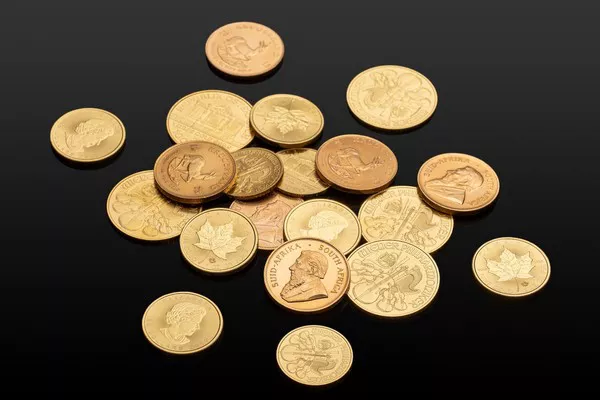The Federal Reserve, often simply referred to as the Fed, is the central bank of the United States. It plays a pivotal role in shaping the country’s monetary policy, which, in turn, has a significant impact on various financial markets, including the gold futures market. Investors and traders closely monitor the actions and decisions of the Fed, as they can influence the price and direction of gold futures. In this article, we’ll delve into how the Federal Reserve affects the gold futures market and what investors should consider when navigating this dynamic relationship.
I. The Fed’s Monetary Policy
The Federal Reserve employs various tools and strategies to manage the nation’s economy. One of its primary objectives is to maintain stable prices and control inflation while promoting economic growth and full employment. To achieve these goals, the Fed employs monetary policy tools, such as adjusting interest rates and implementing quantitative easing (QE) programs.
II. Interest Rates and Gold
The Federal Reserve’s control over interest rates is a key factor in its ability to influence the gold futures market. When the Fed raises interest rates, it becomes more expensive to borrow money. Higher interest rates can strengthen the U.S. dollar and make non-interest-bearing assets like gold less attractive to investors.
Conversely, when the Fed lowers interest rates, borrowing becomes cheaper, and the appeal of gold may increase. Lower interest rates can lead to a weaker U.S. dollar, which often results in higher gold prices. Gold is often viewed as a hedge against currency devaluation, and as such, its price can rise during periods of low interest rates.
III. Quantitative Easing and Inflation Expectations
Quantitative easing (QE) is a monetary policy tool used by the Federal Reserve to inject liquidity into the financial system. QE involves the purchase of financial assets, such as government bonds and mortgage-backed securities, to lower long-term interest rates and stimulate economic activity.
The impact of QE on the gold futures market is closely tied to inflation expectations. As the Fed implements QE programs, investors may become concerned about the potential for future inflation. Gold is seen as a store of value during inflationary periods, and this expectation can drive up demand for the precious metal, thereby influencing gold futures prices.
IV. Fed Statements and Guidance
Besides actual policy actions, the Federal Reserve’s statements and forward guidance can have a profound impact on financial markets, including the gold futures market. The Fed’s Chair, in particular, often delivers speeches and press conferences that provide insights into the central bank’s thinking and future policy intentions.
Traders and investors closely analyze these communications for any hints regarding potential interest rate changes, QE adjustments, or shifts in the Fed’s overall economic outlook. Even subtle changes in language or tone can lead to rapid market reactions, affecting gold futures prices.
V. Global Economic Uncertainty
The Federal Reserve’s actions and policies can also influence the broader economic and geopolitical landscape. For example, changes in U.S. interest rates and the value of the dollar can have far-reaching effects on global financial markets, trade balances, and international investments.
When the Fed takes significant actions or signals a shift in policy, it can create global economic uncertainty. During such times, investors may flock to safe-haven assets like gold as a means of protecting their wealth. This surge in demand can propel gold futures prices higher.
VI. FAQs About the Federal Reserve’s Impact on Gold Futures
1. Can the Federal Reserve directly control the price of gold?
No, the Federal Reserve cannot directly control the price of gold. However, its monetary policy decisions and actions can influence factors such as interest rates and inflation expectations, which, in turn, can impact gold prices.
2. How can I stay informed about the Federal Reserve’s actions and statements?
You can stay informed about the Federal Reserve’s actions and statements by following news outlets, central bank announcements, and official Fed publications. Additionally, monitoring financial markets and economic indicators can provide valuable insights.
3. Are there risks associated with trading gold futures in response to Federal Reserve actions?
Yes, trading gold futures involves risks, including market volatility and potential losses. It’s important for traders to have a clear strategy and risk management plan in place when responding to Fed-related developments.
4. How often does the Federal Reserve make interest rate decisions?
The Federal Reserve meets regularly to make interest rate decisions. The frequency of meetings can vary, but it typically occurs multiple times per year. Announcements about interest rate changes are made at the end of these meetings.
5. Can the Federal Reserve’s policies affect the global gold market?
Yes, the Federal Reserve’s policies can have a significant impact on the global gold market. Changes in U.S. interest rates and the value of the dollar can influence gold prices worldwide, as gold is traded on international markets.
In conclusion, the Federal Reserve plays a vital role in shaping the gold futures market through its monetary policy decisions, interest rate adjustments, and communication with the public and financial markets. Investors in gold futures should stay informed about the Fed’s actions and statements and consider how they may impact their trading strategies. Understanding the dynamic relationship between the Fed and the gold market is essential for making informed investment decisions in this often-volatile asset class.
.

